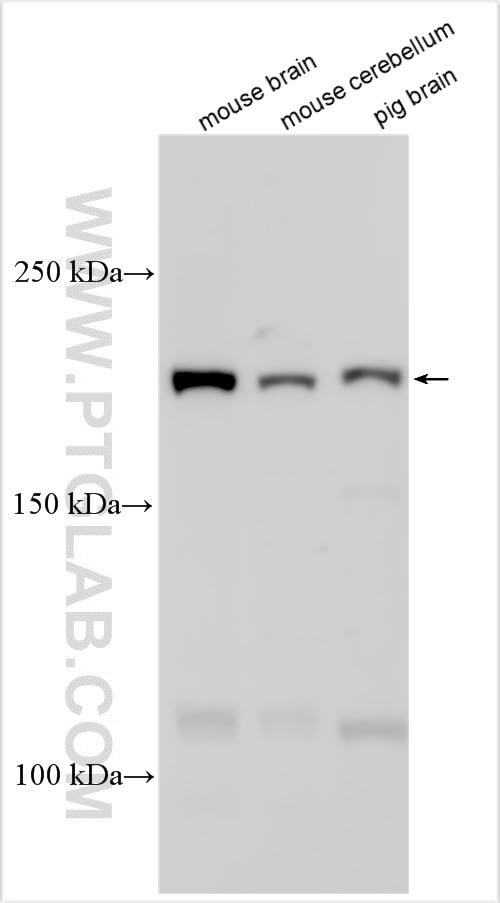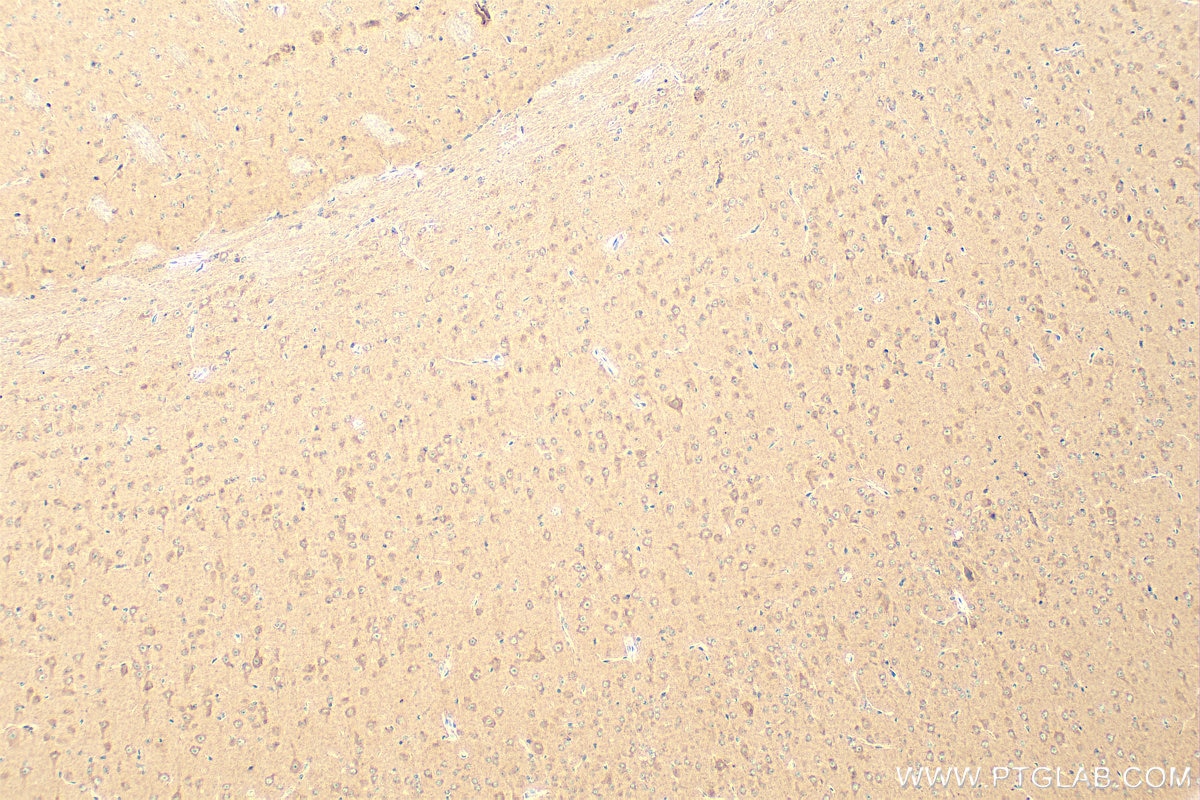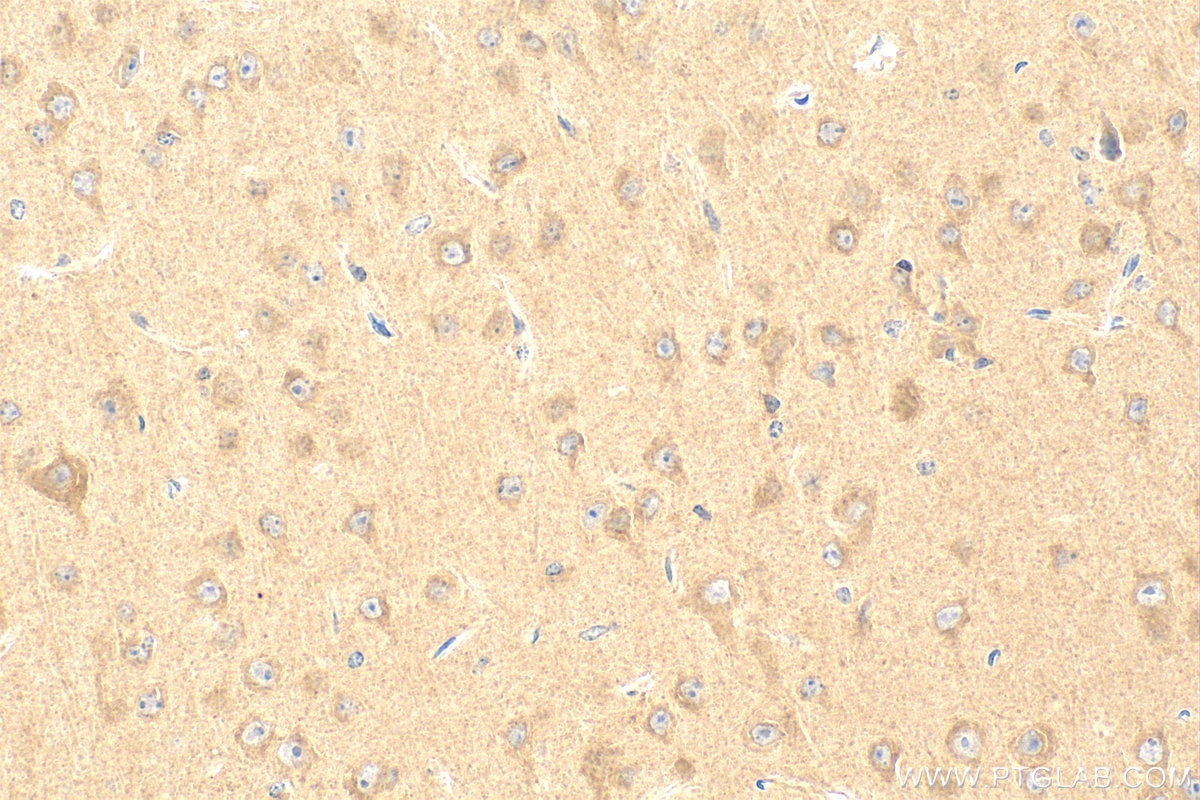Anticorps Polyclonal de lapin anti-SCN9A/Nav1.7-Specific
SCN9A/Nav1.7-Specific Polyclonal Antibody for WB, IHC, ELISA
Hôte / Isotype
Lapin / IgG
Réactivité testée
Humain, porc, souris et plus (1)
Applications
WB, IHC, IF, ELISA
Conjugaison
Non conjugué
N° de cat : 20257-1-AP
Synonymes
Galerie de données de validation
Applications testées
| Résultats positifs en WB | tissu cérébral de souris, tissu cérébral de porc, tissu de cervelet de souris |
| Résultats positifs en IHC | tissu cérébral de souris, il est suggéré de démasquer l'antigène avec un tampon de TE buffer pH 9.0; (*) À défaut, 'le démasquage de l'antigène peut être 'effectué avec un tampon citrate pH 6,0. |
Dilution recommandée
| Application | Dilution |
|---|---|
| Western Blot (WB) | WB : 1:500-1:1000 |
| Immunohistochimie (IHC) | IHC : 1:50-1:500 |
| It is recommended that this reagent should be titrated in each testing system to obtain optimal results. | |
| Sample-dependent, check data in validation data gallery | |
Applications publiées
| WB | See 5 publications below |
| IF | See 6 publications below |
Informations sur le produit
20257-1-AP cible SCN9A/Nav1.7-Specific dans les applications de WB, IHC, IF, ELISA et montre une réactivité avec des échantillons Humain, porc, souris
| Réactivité | Humain, porc, souris |
| Réactivité citée | rat, souris |
| Hôte / Isotype | Lapin / IgG |
| Clonalité | Polyclonal |
| Type | Anticorps |
| Immunogène | Peptide |
| Nom complet | sodium channel, voltage-gated, type IX, alpha subunit |
| Masse moléculaire calculée | 226 kDa |
| Poids moléculaire observé | 226 kDa |
| Numéro d’acquisition GenBank | NM_002977 |
| Symbole du gène | SCN9A |
| Identification du gène (NCBI) | 6335 |
| Conjugaison | Non conjugué |
| Forme | Liquide |
| Méthode de purification | Purification par affinité contre l'antigène |
| Tampon de stockage | PBS with 0.02% sodium azide and 50% glycerol |
| Conditions de stockage | Stocker à -20°C. Stable pendant un an après l'expédition. L'aliquotage n'est pas nécessaire pour le stockage à -20oC Les 20ul contiennent 0,1% de BSA. |
Informations générales
SCN9A, also named as NENA, PN1, ETHA, NE-NA, Nav1.7 and hNE-Na, belongs to the sodium channel family. SCN9A mediates the voltage-dependent sodium ion permeability of excitable membranes. Assuming opened or closed conformations in response to the voltage difference across the membrane, SCN9A forms a sodium-selective channel through which Na+ ions may pass in accordance with their electrochemical gradient. It is a tetrodotoxin-sensitive Na+ channel isoform. SCN9a plays a role in pain mechanisms, especially in the development of inflammatory pain. Defects in SCN9A are the cause of primary erythermalgia or autosomal recessive congenital indifference to pain or paroxysmal extreme pain disorder (PEPD). The antibody is specific to SCN9A
Protocole
| Product Specific Protocols | |
|---|---|
| WB protocol for SCN9A/Nav1.7-Specific antibody 20257-1-AP | Download protocol |
| IHC protocol for SCN9A/Nav1.7-Specific antibody 20257-1-AP | Download protocol |
| Standard Protocols | |
|---|---|
| Click here to view our Standard Protocols |
Publications
| Species | Application | Title |
|---|---|---|
Prog Neurobiol MicroRNA-96 is required to prevent allodynia by repressing voltage-gated sodium channels in spinal cord. | ||
J Neuroinflammation Glial interleukin-1β upregulates neuronal sodium channel 1.7 in trigeminal ganglion contributing to temporomandibular joint inflammatory hypernociception in rats. | ||
Inflammation Prostaglandin E2 Upregulated Trigeminal Ganglionic Sodium Channel 1.7 Involving Temporomandibular Joint Inflammatory Pain in Rats. | ||
Chin J Dent Res Non-steroidal Anti-inflammatory Drugs Attenuate Hyperalgesia and Block Upregulation of Trigeminal Ganglionic Sodium Channel 1.7 after Induction of Temporomandibular Joint Inflammation in Rats. | ||
Neurosci Lett Connexin 43 contributes to temporomandibular joint inflammation induced-hypernociception via sodium channel 1.7 in trigeminal ganglion. | ||
Front Mol Neurosci Ectopic expression of Nav1.7 in spinal dorsal horn neurons induced by NGF contributes to neuropathic pain in a mouse spinal cord injury model |




